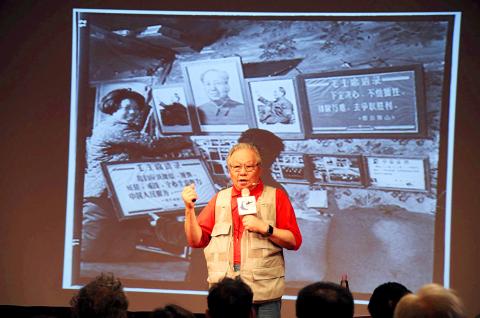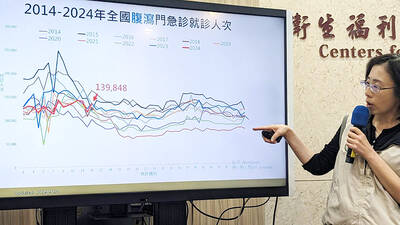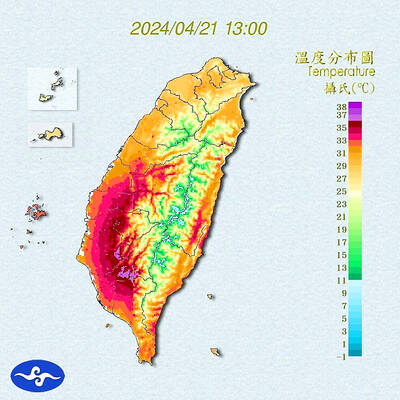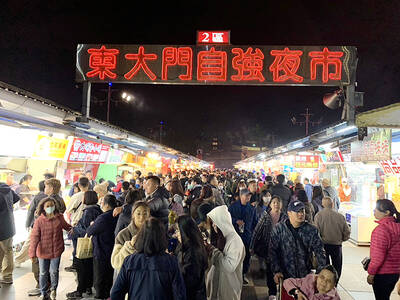The historical record of the horrors of the Cultural Revolution must be remembered as a warning to future generations, said Chinese photographer Li Zhensheng (李振盛), who chronicled events of the time.
“I jokingly call myself the evangelist of the Cultural Revolution, because all human-caused disasters should be kept as part of humanity’s collective heritage,” Li told a lecture organized by the Lung Yingtai Cultural Foundation in Taipei on Thursday.
In the 1960s, he worked as a photojournalist for the Heilongjiang Daily as the fervor of the Cultural Revolution was “sweeping across China like wildfire,” he said.

Photo: CNA
He took nearly 100,000 photographs during that time, he said.
The Chinese Communist Party (CCP)-run newspaper selected only “positive” images for publication, with about 20,000 of Li’s images deemed “negative” and left unused, he said.
Later, sensing that the political winds were turning against him, he hid the unwanted photos — which he dubbed “the useless pictures” — under floorboards in his apartment and told a trusted friend that he was to preserve them should anything happen to him, Li said.
The friend honored his promise and the images later formed the basis of his critically acclaimed body of work, including the book Red-Color News Soldier published in 2003 in the US, the UK, France, Germany and Japan, among other countries.
Many of the photos were taken at struggle sessions and became a record for the madness and folly of the Cultural Revolution, Li said.
Some of the events he captured included the humiliation of then-Heilongjiang provincial governor Li Fanwu (李范五), whose crime was imitating Mao Zedong’s (毛澤東) hairstyle and whose punishment was the humiliation of being shaven half-bald in public.
Another image Li Zhensheng showed was that of an engineer accused of being a Soviet revisionist, because posters he created used the words “to the North.”
He was executed, Li Zhensheng said.
An absurd episode he witnessed revolved around a couple who hung a portrait of Mao over their bed, leading to accusations that they had disrespected him, Li said.
At their struggle session, the couple claimed that they had sex in the dark, but then they were accused of having something to hide from Mao, so the couple changed their story to say they always keep a light on, he said.
The roles of prosecutor and defendant could change hands swiftly and every person alive at that time had been both, he said, adding: “There was no such thing as a good person during the Cultural Revolution.”
“I led struggle sessions against my own colleagues at the paper; a year after that I traded places and became the struggle sessions’ subject,” he said.
About 30 years after hiding the photos, he received a prize for the no-longer-secret collection.
Afterward, a former colleague told him that those who had wholeheartedly followed the CCP only documented half of the history.
The former colleague “said that my heart was less than one-third full of the party, so I got the full picture,” Li said.
“There is light and dark to every period of history, and it was the useless pictures that reconstructed the reality of the Cultural Revolution,” Li said.
“I record the misery to prevent it from happening again,” he said. “Tragedies are remembered in history so that we do not repeat them.”

THE HAWAII FACTOR: While a 1965 opinion said an attack on Hawaii would not trigger Article 5, the text of the treaty suggests the state is covered, the report says NATO could be drawn into a conflict in the Taiwan Strait if Chinese forces attacked the US mainland or Hawaii, a NATO Defense College report published on Monday says. The report, written by James Lee, an assistant research fellow at Academia Sinica’s Institute of European and American Studies, states that under certain conditions a Taiwan contingency could trigger Article 5 of NATO, under which an attack against any member of the alliance is considered an attack against all members, necessitating a response. Article 6 of the North Atlantic Treaty specifies that an armed attack in the territory of any member in Europe,

FLU SEASON: Twenty-six severe cases were reported from Tuesday last week to Monday, including a seven-year-old girl diagnosed with influenza-associated encephalopathy Nearly 140,000 people sought medical assistance for diarrhea last week, the Centers for Disease Control (CDC) said on Tuesday. From April 7 to Saturday last week, 139,848 people sought medical help for diarrhea-related illness, a 15.7 percent increase from last week’s 120,868 reports, CDC Epidemic Intelligence Center Deputy Director Lee Chia-lin (李佳琳) said. The number of people who reported diarrhea-related illness last week was the fourth highest in the same time period over the past decade, Lee said. Over the past four weeks, 203 mass illness cases had been reported, nearly four times higher than the 54 cases documented in the same period

Heat advisories were in effect for nine administrative regions yesterday afternoon as warm southwesterly winds pushed temperatures above 38°C in parts of southern Taiwan, the Central Weather Administration (CWA) said. As of 3:30pm yesterday, Tainan’s Yujing District (玉井) had recorded the day’s highest temperature of 39.7°C, though the measurement will not be included in Taiwan’s official heat records since Yujing is an automatic rather than manually operated weather station, the CWA said. Highs recorded in other areas were 38.7°C in Kaohsiung’s Neimen District (內門), 38.2°C in Chiayi City and 38.1°C in Pingtung’s Sandimen Township (三地門), CWA data showed. The spell of scorching

HOSPITALITY HIT: Hotels in Hualien have an occupancy rate of 10 percent, down from 30 percent before the earthquake, a Tourism Administration official said The Executive Yuan yesterday unveiled a stimulus package of vouchers and subsidies to revive tourism in Hualien County following a quake measuring 7.2 on the Richter scale. The tremor on April 3, which killed at least 17 people and left two others missing, caused the county an estimated NT$3 billion (US$92.7 million) in damages. The Ministry of Economic Affairs is to issue vouchers worth NT$200 at the price of NT$100 for purchases at the Dongdamen Night Market (東大門夜市) in Hualien City to boost spending, a ministry official told a news conference after a Cabinet meeting in Taipei. The ministry plans to issue 18,400